Maroons in Guyane
Race in the Atlantic World, 17001900
SERIES EDITORS
Richard S. Newman, Rochester Institute of Technology
Patrick Rael, Bowdoin College
Manisha Sinha, University of Massachusetts, Amherst
ADVISORY BOARD
Edward Baptist, Cornell University
Christopher Brown, Columbia University
Vincent Carretta, University of Maryland
Laurent Dubois, Duke University
Erica Armstrong Dunbar, University of Delaware and the Library Company of Philadelphia
Douglas Egerton, LeMoyne College
Leslie Harris, Emory University
Joanne Pope Melish, University of Kentucky
Sue Peabody, Washington State University, Vancouver
Erik Seeman, State University of New York, Buffalo
John Stauffer, Harvard University
Maroons in Guyane
Past, Present, Future
RICHARD PRICE AND SALLY PRICE
The University of Georgia Press  Athens
Athens
A Sarah Mills Hodge Fund Publication
This publication is made possible in part through a grant from the Hodge Foundation in memory of its founder, Sarah Mills Hodge, who devoted her life to the relief and education of African Americans in Savannah, Georgia.
Published by the University of Georgia Press
Athens, Georgia 30602
www.ugapress.org
2022 by Richard Price and Sally Price
All rights reserved
Designed by Erin Kirk
Set in Warnock Pro
Printed and bound by Sheridan Books
The paper in this book meets the guidelines for permanence and durability of the Committee on Production Guidelines for Book Longevity of the Council on Library Resources.
Most University of Georgia Press titles are available from popular e-book vendors.
Printed in the United States of America
26 25 24 23 22 P 5 4 3 2 1
Library of Congress Cataloging-in-Publication Data
Names: Price, Richard, 1941 author. | Price, Sally, author.
Title: Maroons and Guyane : past, present, future / Richard Price and Sally Price.
Description: Athens : University of Georgia Press, [2022] | Series: Race in the Atlantic world | Includes bibliographical references.
Identifiers: LCCN 2021045241 | ISBN 9780820362458 (hardback) | ISBN 9780820360867 (paperback) | ISBN 9780820361567 (ebook)
Subjects: LSCH: MaroonsFrench GuianaHistory. | MaroonsFrench GuianaSocial conditions.
Classification: LCC F2471.B55 P755 2022 | DDC 988.2dc23
LC record available at https://lccn.loc.gov/2021045241
Gravediggers returning to the village during the funeral rites for the paramount chief of the Saamakas, Agbago Aboikoni, 1989.
Contents


During our first fifteen years of anthropological research on Maroons in the French overseas dpartement of Guyane (French Guiana), our conversations with local peoplejournalists, politicians, educators, civil servants, and many othersconvinced us of the need to replace the pervasive stereotypes circulating about the Maroon populations living in their midst with accurate information. Those encounters inspired us to write a book, in French, to answer that needLes Marrons, which was published in 2003. The book was also intended for young Maroons, many of whom were seriously interested in their own history and able to read French because of having gone to school in Guyane. Our idea was to provide an introduction to the history of the four Maroon peoples in Guyane (Alukus, Okanisis, Pamakas, and Saamakas), clarify the ways in which these groups differ from one another (culturally and linguistically), and trace the main lines of their respective situations at different points in time. This English-language edition provides an update of their fast-evolving presence in Guyane.

We begin by calling attention to four key points:
.Maroons are not a single people. They are members of six distinct societies (four of which are represented in the population of Guyane) whose traditional territories are separated by considerable geographical distance and who display significant differences in language, religion, social organization, and myriad other aspects of culture.
.Taken together, Maroons now constitute 36 percent of the population of Guyane, which makes them the largest population segment of the dpartement. As of 2020, there were some 100,000 Maroons in Guyane47,000 Okanisis, 36,000 Saamakas, 10,000 Alukus, and 7,000 Pamakas. With a remarkably high birth rate and strong ongoing immigration, their proportionate share of the total population continues to rise rapidly.
.None of the Maroon peoples in Guyane originated there. They all came from neighboring Suriname. The groups have distinct histories of arrival in Guyane, having come at different times and in different circumstances, which has much to do with their contrasting political statuses today. These differences have generated rivalries and jealousies that continue to influence the roles that Maroons play in the society of Guyane.
.Maroons are known worldwide for the richness of their cultures and their deep historical consciousness. Their distinctive creole languages are among the most important in the world for linguists. Their arts play a key role in helping us understand historical processes in the African diaspora. Their knowledge of medicinal plants contributes to the pharmacological research of multinational drug companies. And their deep historical knowledge has contributed to a reevaluation of what Claude Lvi-Strauss once called la pense sauvage.
In contemporary Guyane, the choice of a collective term for these peoples is strongly politicized. Aluku politicians have adopted the term Buschinengu, rejecting Noir Marron and Marron as connoting a European gaze. Saamakas, who are far more numerous in Guyane but have no political influence (because unlike the Alukus, they are not French citizens), reject Buschinengu as a word that appears only in the language of the Alukus and their neighbors.
In this book, we adopt the term Maroon both because it is neutral regarding intergroup rivalries and because it has strong connotations of heroism and freedom fighting. (We made a similar choice in the 1960s, when Afro-Surinamese politicians in Paramaribo tried to introduce the term Boslandcreool to assimilate Maroons to the Creole political party.) In our view, the heroism of historical Maroons throughout the hemisphere, from Brazil to the United States, and the pride this brings to their descendants today more than justify the use of this term.
This book is the fruit of more than a half century of research into the history and culture of Maroons in Suriname and Guyane. It would be impossible to recognize individually the hundreds (perhaps thousands) of people and organizations that have shared their lives and thoughts with us over the years, so we simply thank them collectively here. We would like to express special gratitude to the DAC (Direction des Affaires Culturelles de la Guyane) and the Canope des Sciences association for supporting our research in 2018.
The English word maroon (French marron) derives from the Spanish cimarrnitself based on an Arawakan (Tano) Indian root.

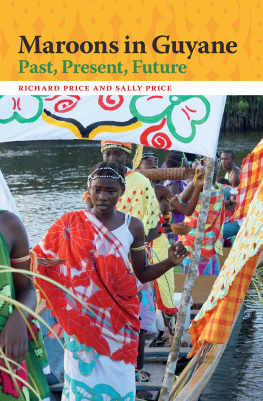
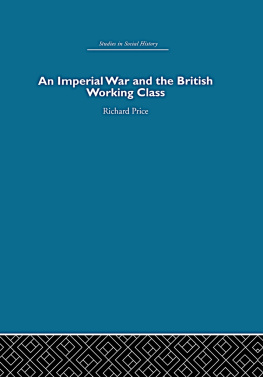
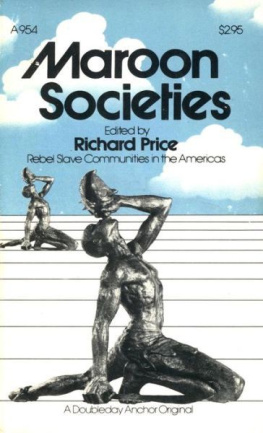



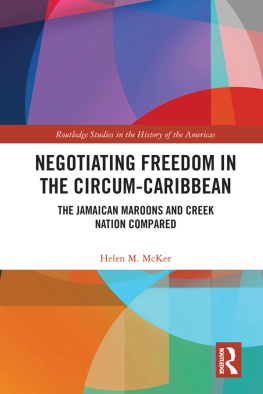
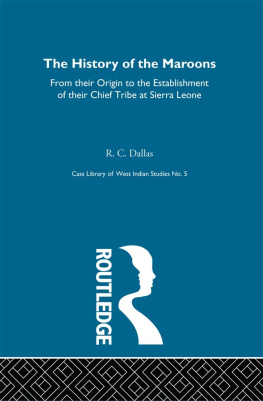
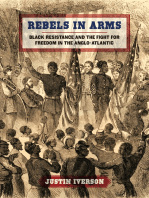

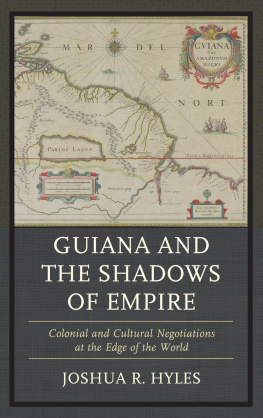

 Athens
Athens